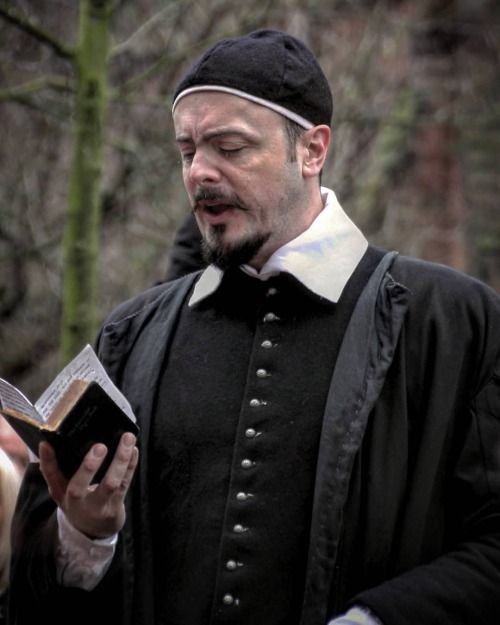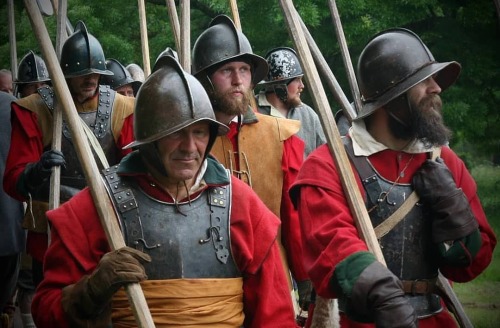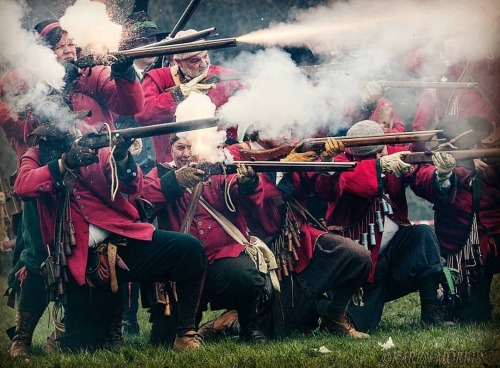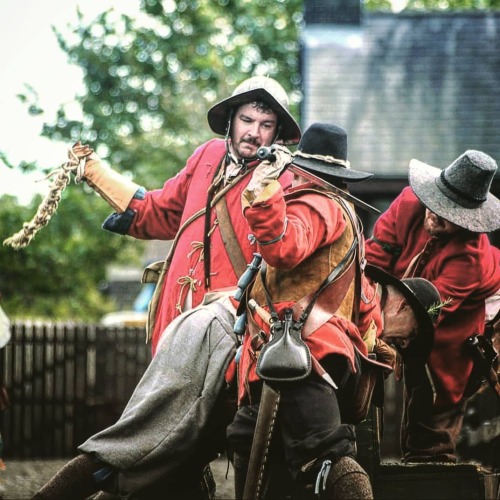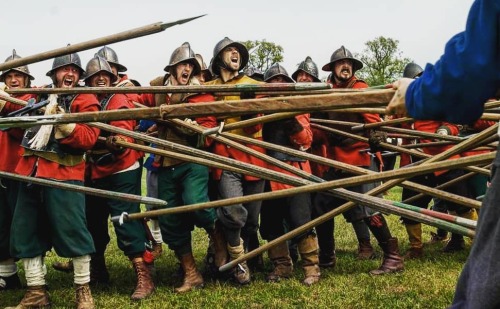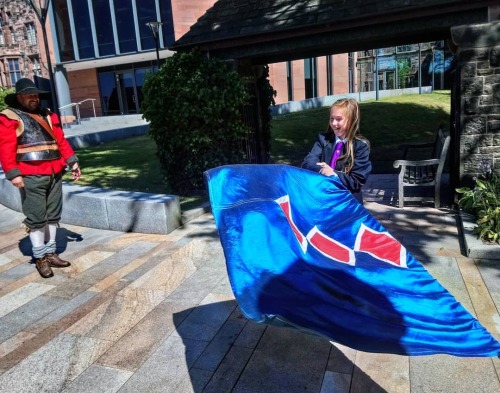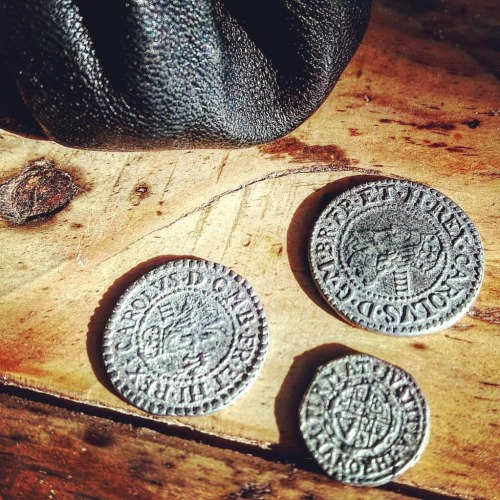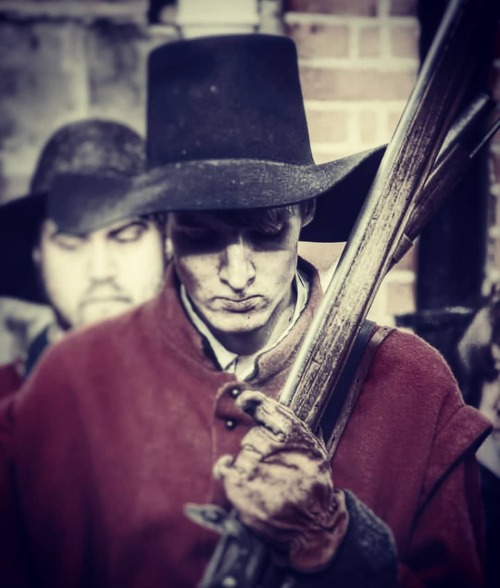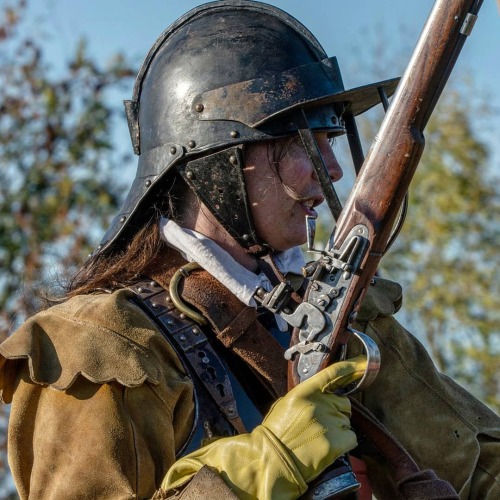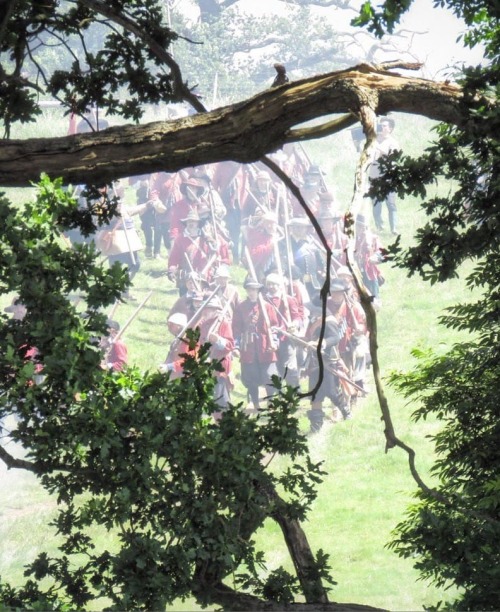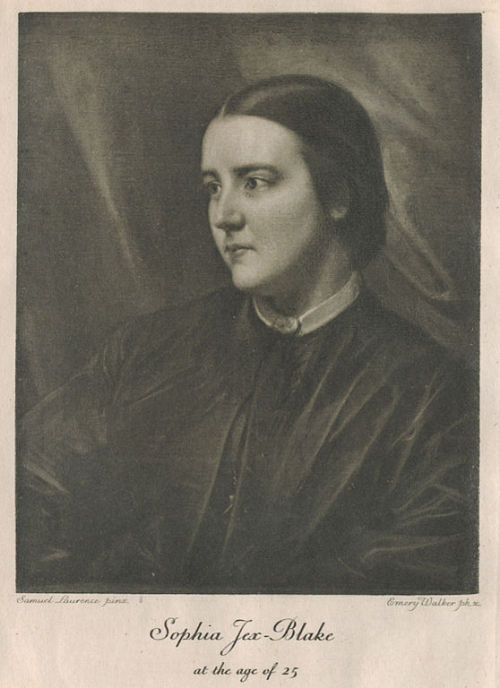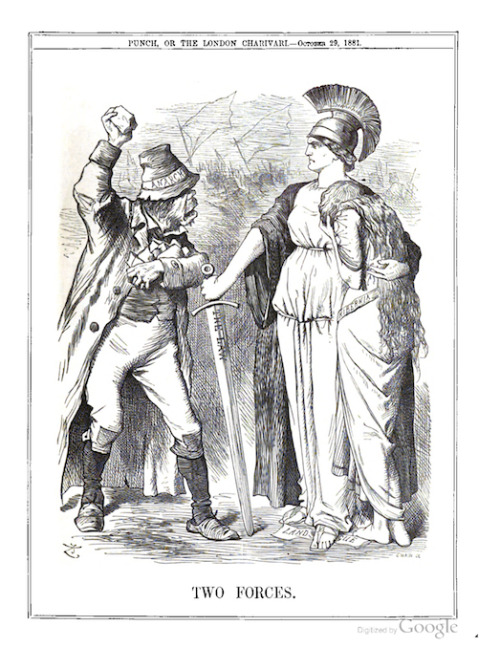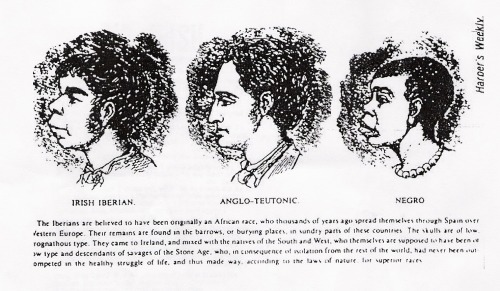#history
“The ingenuity and candor of London preachers is famous throughout the whole Kingdom, doth not it further appear, by setting the people at first against the King and his party — and now having raised men’s spirits to a resolution of requiring just and scriptural satisfaction that blood may be avenged, in cry out in your pulpits, of staining the Protestant Religion with the blood of the King.” - Christopher Love
.
Christopher Love was a controversial Welsh Presbyterian preacher during the English Civil War. Not only was he one of the first Puritans to oppose the reforms of Archbishop of Canterbury William Laud but his preaching was so inflammatory that during negotiations with the Royalists in early 1645 Love was locked up by the Commons. In late 1645 he offended the Independents, who on gaining power in the Commons confined him again. He vehemently opposed the execution of King Charles and claimed that it “stained” the Protestant religion. In 1651, he was convicted of treason and sentenced to death. Oliver Cromwell gave Love reprieves of one-month and then one-week but the courts wanted to make an example of him to quash any further trouble from the Presbyterians. On 23 August 1651, he was executed on Tower Hill in London. He would become a martyr to the Presbyterians, who had been defeated by the Independents in the struggle for control of Parliament and were then persecuted after the Restoration.
.
David Swift
.
#sunday #sundayservice #preacher #preaching #religion #photoreenactment #reenactment #reenactors #reenacting #reenactorstyle #reenactorslife #reenactorsofinstagram #reenactmentphotography #livinghistory #history #photohistory #historicalreenactment #17thcentury #sealedknot #dailyphoto #photoaday #photooftheday #photoadaychallenge #englishcivilwar #instadaily
https://www.instagram.com/p/B_tHUncnUXB/?igshid=1jbhh30pej0im
Post link
“These shall have strong, straight, yet nimble pikes of ashwood, well headed with steel and armed with plates downward from the head, at least four foote, and the full size or length of every pike shall be fifteen foot besides the head. These pikemen shall also have good, sharpe, and broade swords (of which Turkey and Bilboe are best), strong scabbards, chapt with iron, girdle, hangars or bautricke of strong leather; and lastly, if to the pikeman’s head peece be fastened a small ring of iron, and to the right side of his back piece (below his girdle) an iron hook, to hang his steele cap upon, it will be a great ease to the souldier, and a nimble carriage in the time of long marches.” - Gervase Markham, The Souldiers Accidence or an Introduction Into Military Discipline (1635)
.
Glenn Johnson
.
#pikemen #pike #soldiers #war #army #photoreenactment #reenactment #reenactors #reenacting #reenactorstyle #reenactorslife #reenactorsofinstagram #reenactmentphotography #livinghistory #history #photohistory #historicalreenactment #17thcentury #sealedknot #dailyphoto #photoaday #photooftheday #photoadaychallenge #englishcivilwar #instadaily
https://www.instagram.com/p/B_qas06njYQ/?igshid=1qz31kcoeiml1
Post link
There’s no smoke without fire - and no musket firing without gunpowder! Nathaniel Nye was a master gunner from Worcester during the English Civil War and gave a recipe for black powder in 1647 of “four parts petre, one part Brimstone and one part Cole", which is four parts potassium nitrate (or saltpetre), one part sulphur and one part charcoal. Some powder used may have been manufactured by simply powdering the three components separately and then grinding them together in a mortar by hand. Larger scale production would be carried out in stamp mills where the powder mixture was pounded in wooden mortars by wooden-headed stamps, which were moved up and down by using horse or water power.
.
Powder was always in short supply, especially for the King’s forces. In his capital of Oxford, two corn mills were converted to produce gunpowder (helping precipitate a food shortage) and by the summer of 1643 a munitions plant established in the Schools at Oxford was supplying a range of military stores including gunpowder, slow match, bullets, pikes and bills. However, production was limited: in July 32 barrels of gunpowder were delivered and the following month a further 15 but it was not until November that a further 50 barrels were supplied. As there were no natural deposits of saltpetre in the country, Oxford, like all other gunpowder mills in England, was dependent upon supplies manufactured by a slow and unpleasant process from human and animal waste. Despite the best efforts of the king’s ordnance officers at Oxford, production in the city was not sufficient to meet the demand for arms and ammunition.
.
Karen Morris
.
#musket #musketeers #fire #smoke #gun #gunpowder #blackpowder #photoreenactment #reenactment #reenactors #reenacting #reenactorstyle #reenactorslife #reenactorsofinstagram #reenactmentphotography #livinghistory #history #photohistory #historicalreenactment #17thcentury #sealedknot #dailyphoto #photoaday #photooftheday #photoadaychallenge #englishcivilwar #instadaily #historyhit #oxford #oxforduniversity
https://www.instagram.com/p/B_n4tGXHqQI/?igshid=1cojwa9ic9tya
Post link
Our 900th post!!! In the English Civil Wars, military justice was often rough justice - a musketeer is whipped with knotted rope by his compatriots for swearing illegal oaths and gambling.
.
In April 1643, Oliver Cromwell had two deserters from his own cavalry troop whipped in the marketplace at Huntingdon and turned away as ‘renegadoes’, and the idea of military discipline could be an alien concept to the hastily cobbled-together armies of the civil war, which were often made up as much by society’s undesirables as they were motivated soldiers. Even their officers could be powerless to stop them. At Adwalton Moor on 29 June 1643, Sir Thomas Fairfax watched as four of his own soldiers plundered the corpse of the Royalist Colonel George Heron in the midst of battle, but he recorded with satisfaction their death from an enemy cannon-shot.
.
On 9 November 1642, Parliament laid down 'The Laws and Ordinances of War established for the better conduct of the Army’. This military code forbade everything from duelling to theft, from killing a surrendering enemy to 'pillaging without licence’.
.
Carl Pedley
.
#whip #whipping #discipline #punishment #army #soldiers #photoreenactment #reenactment #reenactors #reenacting #reenactorstyle #reenactorslife #reenactorsofinstagram #reenactmentphotography #livinghistory #history #photohistory #historicalreenactment #17thcentury #sealedknot #dailyphoto #photoaday #photooftheday #photoadaychallenge #englishcivilwar #instadaily
https://www.instagram.com/p/B_lVtiWnex-/?igshid=ml82pnf20tpk
Post link
We’ve talked a lot recently about the ‘push of pike’ and this is as close as we get to the press of pike divisions in the midst of battle - it can be quite intense in the middle of all that, let us tell you!
.
@photosm_stephen_moss
.
#pike #pikemen #battle #war #fight #photoreenactment #reenactment #reenactors #reenacting #reenactorstyle #reenactorslife #reenactorsofinstagram #reenactmentphotography #livinghistory #history #photohistory #historicalreenactment #17thcentury #sealedknot #dailyphoto #photoaday #photooftheday #photoadaychallenge #englishcivilwar #instadaily
https://www.instagram.com/p/B_gKB31HUQT/?igshid=91uxql0wtvnx
Post link
Musketeer Kel keeps his match burning during an event at Peterborough Cathedral by gently blowing on it. ‘Slow match’ was thin hemp or flax cord that had been soaked in a solution containing saltpetre – otherwise known as potassium nitrate and commonly extracted from urine – which would burn slowly and steadily. It was estimated at the time that a single soldier on guard duty would burn through a mile of match in a year. As well as being almost useless when it was raining, musketeers who were careless about their match and gunpowder could easily find themselves scattered over a wide area. The rise of the flintlock, which ignited its gunpowder with a piece of flint scraped along a metal plate, gradually saw the matchlock replaced though it persisted well into the 1700s. During the English Civil War, flintlocks were mostly used for guard duty and for soldiers guarding powder stores where burning match might cause a problem.
.
#musket #musketeers #match #slowburn #photoreenactment #reenactment #reenactors #reenacting #reenactorstyle #reenactorslife #reenactorsofinstagram #reenactmentphotography #livinghistory #history #photohistory #historicalreenactment #17thcentury #sealedknot #dailyphoto #photoaday #photooftheday #photoadaychallenge #englishcivilwar #instadaily
https://www.instagram.com/p/B_W9u_2n8I7/?igshid=ej7knu9o4pc0
Post link
“…after they have given their first thrust with their pikes and being come to join with their enemies front to front and face to face, and therefore the use and execution of the pikes of the foremost ranks being past, they must presently betake themselves to the use of their swords and daggers …the nearness and press being so great.” - Sir John Smythe, Certain Discourses Military, 1590
.
In a ‘push of pike’, pike divisions could be up to six deep and each man pressed on the one in front, so sometimes the formations would crush against each other and many pikemen would have to fight in close melee combat. The Italians referred to this as 'Bad War’ but, by the time of the English Civil Wars, pike pushes were relatively rare as the musket came to dominate the battlefield.
.
@johnbeardy
.
#pike #pikemen #battle #war #combat #pushofpike #photoreenactment #reenactment #reenactors #reenacting #reenactorstyle #reenactorslife #reenactorsofinstagram #reenactmentphotography #livinghistory #history #photohistory #historicalreenactment #17thcentury #sealedknot #dailyphoto #photoaday #photooftheday #photoadaychallenge #englishcivilwar #instadaily
https://www.instagram.com/p/B_TXDNDn-EB/?igshid=srethyqxiov
Post link
We love teaching kids about history, that’s why we’re unveiling our FREE education and activity packs this week, the first of which will be available for download from our website tomorrow. As well as exploring the causes of the English Civil War and tying in to Key Stage 3 of the National Curriculum, it will include fun activities to see out lockdown days away from the classroom!
.
#education #lockdownlearning #lockdownlessons #school #learning #teacher #teachers #teachingfromhome #freelearning #photoreenactment #reenactment #reenactors #reenacting #reenactorstyle #reenactorslife #reenactorsofinstagram #reenactmentphotography #livinghistory #history #photohistory #historicalreenactment #17thcentury #sealedknot #dailyphoto #photoaday #photooftheday #photoadaychallenge #englishcivilwar #instadaily
https://www.instagram.com/p/B_Mn1MhHwEw/?igshid=1bwqk4zwwd26r
Post link
A soldier’s meagre recompense: the pay for an ordinary Parliamentarian soldier during the #englishcivilwar was 8 pence a day. This is a fourpence, thruppence and a penny coined in the 1630s. But you’d be unlikely to see the full amount though - deductions were made for your clothes, shoes, arms, food and lodging (soldiers serving in Dublin in 1641 received only one pence out of their four shillings and eight pence weekly pay after deductions) and pay was usually weeks, if not months, in arrears and proper payment of their wages was a constant demand of Parliamentarian soldiers.
.
#pay #coins #money #photoreenactment #reenactment #reenactors #reenacting #reenactorstyle #reenactorslife #reenactorsofinstagram #reenactmentphotography #livinghistory #history #photohistory #historicalreenactment #17thcentury #sealedknot #dailyphoto #photoaday #photooftheday #photoadaychallenge #englishcivilwar #instadaily
https://www.instagram.com/p/B_JCLucnZeu/?igshid=r841jvn8bo5x
Post link
“In March, in Motion, troop or stand, Observe both Leader and right hand:
In silence note in what degree
You in Body, paced be:
That so you may with more trouble Know where to stand and when to double” - from The Grounds of Military Discipline (1612)
.
Between the death of Elizabeth I in 1603 and the formation of the New Model Army in 1645, Englishmen penned more than 90 books on military subjects, including lengthy treatises on the art military, infantry drill manuals, books on personal combat, military histories, and pamphlets on the laws of war, many of which were written with the intention of moulding the “complete” or “perfect” soldier. A complete soldier was usually a gentleman who could read and write, and who gained his experience either by volunteering for service abroad in the wars raging in Europe or by practising the military arts at the local muster ground or military yard. Some argued, however, that experience alone was not enough to make a complete soldier and soldiers should also take time to study and read, gleaning what they could from the wisdom and experience of others.
.
@eryzlie
.
#military #militarylife #soldiers #books #learning #drill #photoreenactment #reenactment #reenactors #reenacting #reenactorstyle #reenactorslife #reenactorsofinstagram #reenactmentphotography #livinghistory #history #photohistory #historicalreenactment #17thcentury #sealedknot #dailyphoto #photoaday #photooftheday #photoadaychallenge #englishcivilwar #instadaily
https://www.instagram.com/p/B_Hias4nW_J/?igshid=l8roeq2wgmdt
Post link
“Wet weather and want of provisions will make Captain Cold and Captain Hunger much injure the army” - A Perfect Diurnal, 1650
.
Life as an English Civil War soldier could be pretty miserable. Lack of provisions constantly affected armies and if they couldn’t live off the land or steal from local people then they could face a sorry situation. Some could merely look forward to meals of turntip tops while those caught up in devastating sieges such as Colchester in 1648 were forced to eat horses, dogs, and even rats. Analysis of diaries of the time suggests that most soldiers during the first civil were in some form of constant starvation, as they could not fulful their dietary needs. They, in turn, led to unrest and mutiny, with several officers suddenly finding their men unwilling to follow orders until their bellies or their purses were filled.
.
DMC08 on Flickr
.
#food #diet #photoreenactment #reenactment #reenactors #reenacting #reenactorstyle #reenactorslife #reenactorsofinstagram #reenactmentphotography #livinghistory #history #photohistory #historicalreenactment #17thcentury #sealedknot #dailyphoto #photoaday #photooftheday #photoadaychallenge #englishcivilwar #instadaily
https://www.instagram.com/p/B_FT17_nx9W/?igshid=1hs5loqctqslf
Post link
“They hate all gentlemen, especially such as serve his Majesty at sea.”
.
A Devon fisherman waits on a rock in the surf, contemplating the fact that his livelihood under threat now that the civil war has come to his county. Although far from London and Oxford, Devon found itself on the front lines in the first English Civil War with its major towns declaring for different sides - Plymouth for Parliament, Exeter for the King - while its major industries of tin-mining, wool production, and fishing could be turned to either side’s war effort.
.
In Devon in the 1620s, there were at least 5,000 working mariners - well over five per cent of the adult male population. Fishing was integral to Devon’s economy and seafaring men, as a whole, we’re among the most determined opponents of the King. This could have been for a number of reasons; Mark Stoyle’s ‘Loyalty And Locality’ suggests the fishermen’s support for Parliament may come from their being exposed to other cultures and new ideas from their journeys, as well as their high rates of literacy, their lingering resentment over their treatment during King Charles’ ill-fated attack on Spain in 1628, their awareness of the dangerous strength of the Catholic Habsburg Empire, and the Crown’s lack of support for their communities during economic hard times.
.
#fish #fishing #beach #sea #water #waves #sun #mariner #photoreenactment #reenactment #reenactors #reenacting #reenactorstyle #reenactorslife #reenactorsofinstagram #reenactmentphotography #livinghistory #history #photohistory #historicalreenactment #17thcentury #sealedknot #dailyphoto #photoaday #photooftheday #photoadaychallenge #englishcivilwar #instadaily
https://www.instagram.com/p/B_BQy5GnFHd/?igshid=14eavoy3voge
Post link
“At the South end of Preston towards Wiggon is a Bridge, called Ribble Bridge, which the Scots stoutly kept, being much secured from our shot by flanking hedges; but Lancashire foot drew out their Pikes and charged over the Bridge and by push of Pike gallantly vanquished the resolute opposers, and made way for our horse, who did great execution for two miles, tooke Duke Hamilton’s trunks and plate, but the night made us all draw back to Preston.” - account from the first day of the Battle of Preston in a letter from Major John Sanderson to his father, 20 August 1648
.
Throughout 1648 Sanderson, an officer in the parliamentary army serving in Colonel Lilburne’s Regiment of Horse, recorded his daily activities on the blank pages of an almanac. This diary has survived to provide a unique insight into the life of a cavalry officer in the second Civil War. The text of the diary was first published in 1921 and Sanderson’s terse diary entries give a first hand account of events in the north of England in 1648 which led in January 1649 to the execution of King Charles I.
.
The second Civil War, which lasted from April to August 1648, was a short conflict that pitted former allies, the Scottish and Parliamentarian English, against each other after the Scots sided with King Charles, who was still a prisoner of Parliament. The five-day battle of Preston was a shambolic defeat for the Scottish, while effectively sealing the king’s fate.
.
@davevforce
.
#pike #battle #mist #fog #weapons #photoreenactment #reenactment #reenactors #reenacting #reenactorstyle #reenactorslife #reenactinglife #reenactorsofinstagram #reenactmentphotography #livinghistory #history #photohistory #historicalreenactment #historicalcostume #17thcentury #sealedknot #dailyphoto #photoaday #photooftheday #photoadaychallenge #historyhit #englishcivilwar #instadaily #englishheritage #nationaltrust
https://www.instagram.com/p/B-5soZHnrRy/?igshid=dxlnsm2bmljo
Post link
“O, but what hope’s left? There is hope. There is hope. Were there not, yet order it, that there may be hope. And then harken what God will speak, for his heart and mouth will speak peace unto his broken people.” - sermon preached by Robert Harris to the House of Commons, 25 May 1642
.
For Christians, Easter has always been founded on a message of hope and rebirth. This message, regardless of your own beliefs, feels more important than ever right now. In May 1642, people had no real idea of how quickly things would unfold and how much their way of life would be changed by the still-simmering conflict. Yet even in these darkest of days there remained hope, not as a naive bandage covering things over but as a support, a guide, a light in the darkness. Whatever our religious persuasion, or otherwise, let us all take a moment to focus on hope and give thanks for all those whose tireless work puts them in harm’s way.
.
Stuart Bulman
.
#easter #hope #photoreenactment #reenactment #reenactors #reenacting #reenactorstyle #reenactorslife #reenactorsofinstagram #reenactmentphotography #livinghistory #history #photohistory #historicalreenactment #17thcentury #sealedknot #dailyphoto #photoaday #photooftheday #photoadaychallenge #englishcivilwar #instadaily
https://www.instagram.com/p/B-4RmxlHbYt/?igshid=6xaqyo17vhth
Post link
“His defensive arms are only an open Caske or Head-peece, a back and brest with a buff coat under his armes [armour]; his offensive Armed are a good Harquebusse, or a Carbine hanging on his right side in a belt by a sweble [swivel], a flask and Carthareg [cartridge] case, spanner, and two good firelock pistols” - John Vernon, describing the equipment for cavalrymen in 1644.
.
A cavalryman brandishes their ‘firelock’ pistol, known also as a 'flintlock’. Around half of such pistols used by cavalry during the English Civil War were 'wheel-lock’ pistols which spun a spring-loaded steel wheel against a piece of pyrite to generate sparks, which then ignited gunpowder in a pan. The other half were early forms of 'flintlock’, which used a piece of flint striking against a steel plate to produce the sparks for ignition.
.
At the beginning of the first civil war, Parliament’s cavalry abided by the old Dutch-style tactics of using cavalry defensively and as a support for infantry. Cavalrymen would advance towards the enemy and discharge their pistols before retiring to reload. This tactic was painfully inadequate to the more aggressive Swedish system, favoured by the Royalists, of charging at the enemy and firing their pistols at the last second before smashing into the enemy and fighting in melee with swords to drive them off. It took time for Parliament to adjust to this new tactic, resulting in several stunning Royalist victories, but once they combined it with strong training and discipline it proved to be one of the keys to total victory.
.
#gun #guns #flintlock #weapons #photoreenactment #reenactment #reenactors #reenacting #reenactorstyle #reenactorslife #reenactinglife #reenactorsofinstagram #reenactmentphotography #livinghistory #history #photohistory #historicalreenactment #historicalcostume #17thcentury #sealedknot #dailyphoto #photoaday #photooftheday #photoadaychallenge #historyhit #englishcivilwar #instadaily #englishheritage #nationaltrust
.
Chris Sutton
https://www.instagram.com/p/B-0d-BuHCz3/?igshid=11hq5inkg6mif
Post link
It’s Easter weekend and, ordinarily, we’d be marching around in a field somewhere, clad entirely in linen and wool. It would have been perfect weather too! The lockdown has really brought it home how fortunate we normally are to be able to pursue our passion with so many great friends. It has also reminded us how much we rely on one another. If you’re finding things difficult and just need to talk, whether it’s serious or daft, our DMs are always open.
.
@davevforce
.
#march #sun #battle #lockdown #photoreenactment #reenactment #reenactors #reenacting #reenactorstyle #reenactorslife #reenactorsofinstagram #reenactmentphotography #livinghistory #history #photohistory #historicalreenactment #17thcentury #sealedknot #dailyphoto #photoaday #photooftheday #photoadaychallenge #englishcivilwar #instadaily #easter #easterweekend
https://www.instagram.com/p/B-zCZxln3W_/?igshid=uonfewnh7r29
Post link
“Stone walls do not a prison make,
Nor iron bars a cage;
Minds innocent and quiet take
That for a hermitage;
If I have freedom in my love,
And in my soul am free,
Angels alone that soar above
Enjoy such liberty.” - Richard Lovelace, “To Althea, From Prison’, 1642
.
Social distancing and self-isolation is not easy, especially if you don’t have much space. But we mustn’t allow the walls that surround us to become prisons and barriers to our minds and souls. Solidarity to those feeling the pressure and to those caring for others. Things are pretty grim still, but there are always candles in the darkness and for everyone keeping hope alive, we thank you.
.
Richard Lovelace (1617-57) was an English poet and Cavalier army officer during the English Civil Wars. John Aubrey and Anthony Wood, both diarists of the age, described Lovelace as one of the most beautiful gentlemen they had ever met. In 1641, he led a group of men to seize and destroy a petition for the abolition of bishops, which had been signed by 15,000 people. The following year he presented the House of Commons with a pro-Royalist petition which was supposed to have been burned. These actions resulted in Lovelace’s first imprisonment, when he wrote "To Althea, From Prison”.
.
#poet #poetry #poetsofinstagram #lovelace #photoreenactment #reenactment #reenactors #reenacting #reenactorstyle #reenactorslife #reenactorsofinstagram #reenactmentphotography #livinghistory #history #photohistory #historicalreenactment #17thcentury #sealedknot #dailyphoto #photoaday #photooftheday #photoadaychallenge #englishcivilwar #instadaily
https://www.instagram.com/p/B-vPyJLHqeI/?igshid=14ky6aisqc9jk
Post link
Sophia Jex-Blake, MD
So, friends, it’s been a while. This is going to be a quick post to celebrate the amazing lady pictured above, a Victorian trailblazer whom you may not have heard of before but definitely should remember from now on.
Sophia Jex-Blake, quite apart from having one of the sickest Victorian names I’ve ever come across, was the leader of the ‘Edinburgh Seven’ (the others were Isabel Thorne, Edith Pechey, Matilda Chaplin, Helen Evans, Mary Anderson, and Emily Bovell). These seven women petitioned the University of Edinburgh to allow them to matriculate [i.e., to become students on a course for a degree] in medicine. At first, the uni told Jex-Blake – who initially sought to take the entrance exam alone, before enlisting the help of the others – it would be too expensive and disruptive to have to set up lessons, exams, surgery theaters, etc., for just one woman. Obviously this was an excuse to exlude Jex-Blake because of her gender, which the medical establishment deemed too sensitive and too distracting to allow into their halls. Jex-Blake called their BS, publicly calling for like-minded women via posts in The Scotsmannewspaper and thus gathering together six fellow women. The Edinburgh Seven thus studied up for the matriculation exam. As the Wiki report notes:
Of the 152 candidates who sat the exam on 19 October 1869, five were women. Four of the women came in the top seven places. [x]
By18 November 1870, they were in.
Except, as Virginia Woolf can tell you, getting “in” isn’t the end of the struggle. Once Jex-Blake et al. had joined the program, pushback from the male-dominated students, teaching assistants, professors, and physicians made attending classes – even gettingto lectures – incredibly difficult. Not only did the university charge the womenhigher tuition fees (for the inconvenience of being women and thus necessitatingseparate courses!), but also offered them fewer scholarship opportunities to pay for their coursework. More violent reactions came from classmates and TAs:
Sophia later wrote that it was “as if a conspiracy had been formed to make our position as uncomfortable as might be”. She catalogued the abuse: her doorbell was “wrenched off” and her nameplate damaged five times; a Catherine wheel was attached to her door; smoke was blown in their faces;filthy letters were sent; they were waylaid in quiet streets; obscenities were shouted at them in public.
Edith Pechey, in a letter to the Scotsman, also spoke of being followed in the streets and having “the foulest epithets”, such as “whore”, shouted at her. [x]
Eventually, after an actual “Servants’ Hall riot” about their attendance, the Seven got near the end of their degrees, only for the university to rule in 1873 that the women were to be rejected of their degrees and dismissed.
After that, each of the Seven decided to pursue her medical career elsewhere. Jex-Blake went to Switzerland to finish her training, then eventually – in 1877 – was recognized in Ireland (still then unified and part of the UK) as a doctor. Thus she was eligible to practice in Britain at last.
But she didn’t just go back to any old major or country hospital. Instead, Jex-Blake(at first with Pechey and other comrades from the Edinburgh fight) founded the Edinburgh School of Medicine FOR WOMEN in 1886! For six years, their school continued to be the only one that fully admitted female students in the discipline of medicine; according to the history of the Royal College of Physicians of Edinburgh, “During the twelve years of the School’s existence,at least 80 students started courses of whom 33 completed their training there; [and] 31 completed their training elsewhere” (x). Nor were these just the same middle-class white women who had stormed the Uni of Edinburgh the previous decade:
At the start of the summer term 1888, Annie Wardlaw Jaganndham, a Hindu woman, came to Edinburgh to continue her medical studies. She was soon joined by Annie Wells, who had studied for the Certificate of Medical Practitioner at Madras University and the Grant Duff Gosha Hospital. Dr Jaganndham was the first of many newly qualified doctors to become resident medical officer in the Edinburgh Hospital for Women and Children, to be followed by other newly qualified young doctors in that position. Other doctors who had studied at the School served in more senior posts in the hospital.
After the two women from India graduated, Dr Jex-Blake wrote a second article which was published in The Spectator in 1890. She again stressed the need for women doctors in India. Her plea was answered by Mr James Cropper who instituted a scholarship for that purpose. The first recipient was Rose Govindurajulu who had taken some medical classes in Madras and been given study leave from her post in the Mysore Hospital. Having qualified, she returned to Mysore to become Assistant Physician and later Surgeon in the Mahareenee’s Hospital. (x)
Now, any fair history of Jex-Blake has to acknowledge her reputation – especially among the women with whom she had begun this fight, and who had been the first teachers at the Edinburgh School – as “brilliant, hot-tempered, and resourceful”in a more generous light; in a more unforgiving one, for being a tenacious tyrant. Eventually, disagreements between Jex-Blake and several of her female colleagues led them to part ways, with the Cadells setting up their own school for women in Edinburgh.
In 1894, though, these schools become moot: the University of Edinburgh finally saw the light, and began admitting women for the Faculty of Medicine. (Their tuition still wasn’t covered, and they still for a while had to attend separate lectures from the male students.) Jex-Blake’s and the others’ newer schools were no longer needed, and since they had been a financial and personal burden on Jex-Blake and the other founders from day one, the ESMW closed in 1898.
More happily, Jex-Blake lived the rest of her life with her companion, Dr. Margaret Todd, a younger woman who had graduated from Jex-Blake’s school in 1894! Not only was Todd a minorly successful novelist, but she also is credited with coining the term “ISOTOPE” (!!!), when discussing with friend and chemist Frederick Soddy his work on, well, isotopes. Soddy went on to win the Nobel Prize in chemistry (in 1921, for this very work); Todd went (obviously) unrecognized for years. She died in 1918, at age 58, after completing a detailed work on Jex-Blake’s life.
Jex-Blake herself died in 1912, age 71. As the Edinburgh alumna page dedicated to her notes, she “continued to campaign for women’s suffrage” both in Britain and in the larger empire “until her death” (x).
Post link
ANTI-IRISH POLITICAL CARTOONS, 1848-1899
As scholar Lewis Parry Curtis notes in his Apes and Angels: the Irishman in Victorian Caricature (1971):It was comforting for some Englishmen to believe — on the basis of the best scientific authority in the Anthropological Society of London — that their own facial angles and orthognathous features were as far removed from those of apes, Irishmen, and Negroes as was humanly possible … The simianizing of Paddy in the 1860s thus emanated from the convergence of deep, powerful emotions about the nature of man, the security of property, and the preservation of privilege … Englishmen who celebrated the genius of the Anglo-Saxon race tended to see themselves as modern Athenians, endowed with Grecian noses and facial angles… these men thought that the common Catholic Irishman was the antithesis of all these desirable qualities: Paddy was a wild, melancholic, indolent, unstable and prognathous Caliban … After the outbreak of Fenian violence in the mid-1860s, Paddy descended further to find himself a niche somewhere between the “white Negro” and the anthropoid apes. [pp. 103, 105, 107, cited in Vincent J. Cheng, Joyce, Race, and Empire]
- ‘The British Lion and the Irish Monkey’
— caption: ‘Monkey (Mr. [John] Mitchell): “One of us MUST be ‘Put Down.’”’ (Punch, March 8, 1848)- ‘A Great Time For Ireland!’
— caption : ‘Mr. G-O’rilla, the Young Ireland Party, exulting over the insult to the British flag. Shouldn’t he be extinguished at once?’ (Punch, Dec. 14, 1861)
[More about The Nation Irish newspaper]- ‘The Irish Frankenstein’
— caption: ‘“The baneful and blood-stained Monster *** yet was it not my Master to the very extent that it was my Creature? *** Had I not breathed into it my own spirit?” *** (Extract from the Works of C[harles] S[tewart] P[A]RN[E]LL, M.P.)’ (Punch, May 20, 1882)
[see more on advocate of Irish Home Rule, Charles Parnell; and the Phoenix Park Murders of the new Irish Secretary and Undersecretary in Dublin, 1882]- ‘Two Forces’
— image: Britannia, wielding the sword of ‘THE LAW’, protecting the figure of Hiberno (Ireland) from the ape-like man of ‘Anarchy’ (by John Tenniel, Punch, Oct. 29, 1881)
— text, previous page: ‘Oh Erin, much maddened, take heart, face the light!
‘There is safety, not scathe, in the straight-levelled steel.
’If our voice is of Force, ‘tis Force of the Right,
‘Not to crush, not to wound, but to guard and to heal.’ [pp193]- Scientific racism: the types of the ‘Irish Iberian’, ‘Anglo-Teutonic’, and ‘Negro’
— text excerpt: ‘They [the supposed African Iberian tribe] came to Ireland and mixed with the natives of the South and West, who themselves are supposed to have been of low type and descendants of savages of the Stone Age, who, in consequence of isolation from the rest of the world, had never been out-competed in the healthy struggle of life, and thus made way, according to the laws of nature, for superior races.’
(Thomas Nast cartoon, Harper’s Weekly US, after 1857/possibly 1899)- 'The King of A-Shantee’
— (by Frederick B. Opper, Puck, Feb. 15, 1882)
— ‘The “Ashantee” were a well known African tribe; “shanty” was the Irish word for a shack or poor man’s house. The cartoon mocks Irish poverty, caricatures irish people as ape like and primitive, and suggests they are little different from Africans, who the cartoonists seems to see the same way. This cartoon irishman has, again, the outhrust mouth, sloping forehead, and flat wide nose of the standard Irish caricature.’ -Michael O’Malley, George Mason University- 'Killing The Goose That Laid The Golden Egg’
— image of the Catholic Church and the Irish-American thug carving up the Democratic Party goose, followed by the fable from Aesop.
— (Harper’s Weekly, Nov. 18, 1871)
Post link
Marble Statue Group of the Three Graces. Roman copy of
These young girls, linked in a dance-like pose, represent The Three Graces: Aglaia (Beauty), Euphrosyne (Mirth), and Thalia (Abundance). They bestow what is most pleasurable and beneficent in nature and society: fertility and growth, beauty in the arts, harmonious reciprocity between men. They enjoyed venerable cults in Greece and Asia Minor. In mythology, they play an attendant role, gracing festivals and organizing dances. Their closest connection is with Aphrodite, whom they serve as handmaidens.
The Metropolitan Museum of Art
Post link

